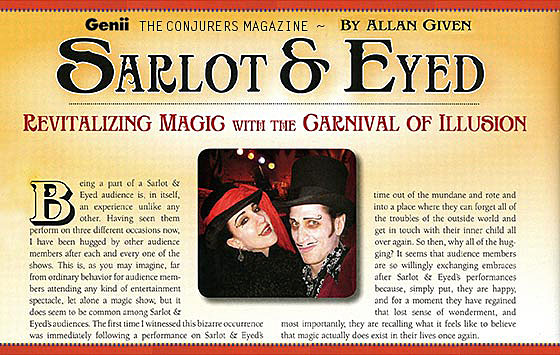SARLOT & EYED:
REVITALIZING MAGIC WITH THE CARNIVAL OF ILLUSION
Genii – The Conjurer's Magazine
by Dr. Will Given
Being a part of a Sarlot & Eyed audience is, in itself, an experience unlike any other. Having seen them perform on three different occasions now, I have been hugged by other audience members after each and every one of the shows. This is, as you may imagine, far from ordinary behavior for audience members attending any kind of entertainment spectacle, let alone a magic show, but it does seem to be common among Sarlot & Eyed's audiences. The first time I witnessed this bizarre occurrence was immediately following a performance on Sarlot & Eyed's final night of a weeklong run in the Parlour of Prestidigitation at The Magic Castle in Hollywood. Closing their show with a beautiful interpretation of "Snowstorm in China" that utilized multi-colored paper butterflies, I watched as wide-eyed adults eagerly grabbed for the tissue paper insects that gently fluttered down to the ground. An elderly gentleman from the Philippines who was visiting The Castle with his family could not stop smiling as he looked through the butterfly storm at me and exclaimed, "This is magic." He then promptly gave me a hug, laughing like he was a little kid the entire time.
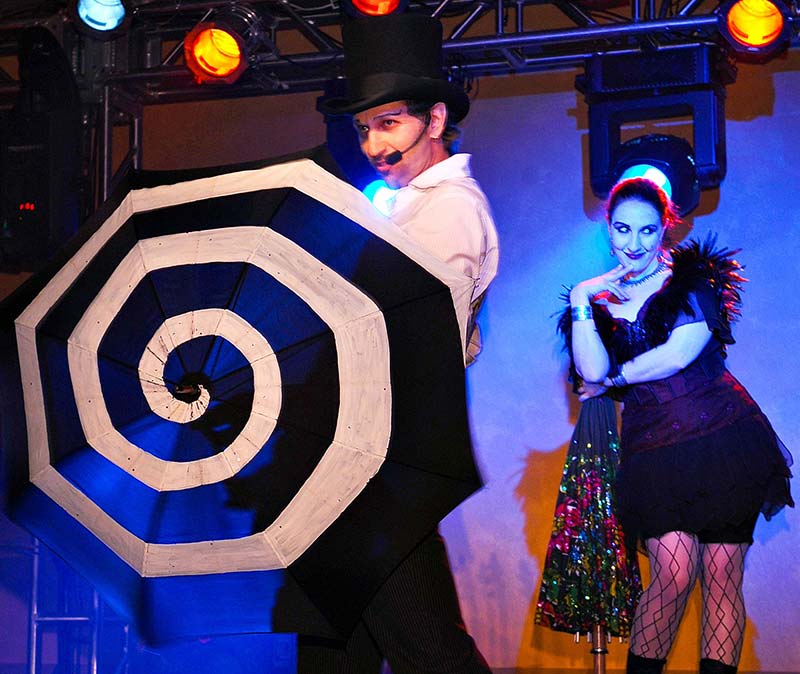
It becomes evident that audiences at a Sarlot & Eyed show instantly tap into that childlike sense of wonder and astonishment after watching the magic unfold before them, and with this, become part of a collective, feeling bound together by the shared experience of the show. Audiences are not simply watching a collection of tricks lumped together and passed off as entertainment of the type that's unfortunately overly prevalent in the world of magic today. Instead, they are taken on a journey, transported for a short amount of time out of the mundane and rote and into a place where they can forget all of the troubles of the outside world and get in touch with their inner child all over again. So then, why all of the hugging? It seems that audience members are so willingly exchanging embraces after Sarlot & Eyed's performances because, simply put, they are happy, and for a moment they have regained that lost sense of wonderment, and most importantly, they are recalling what it feels like to believe that magic actually does exist in their lives once again.
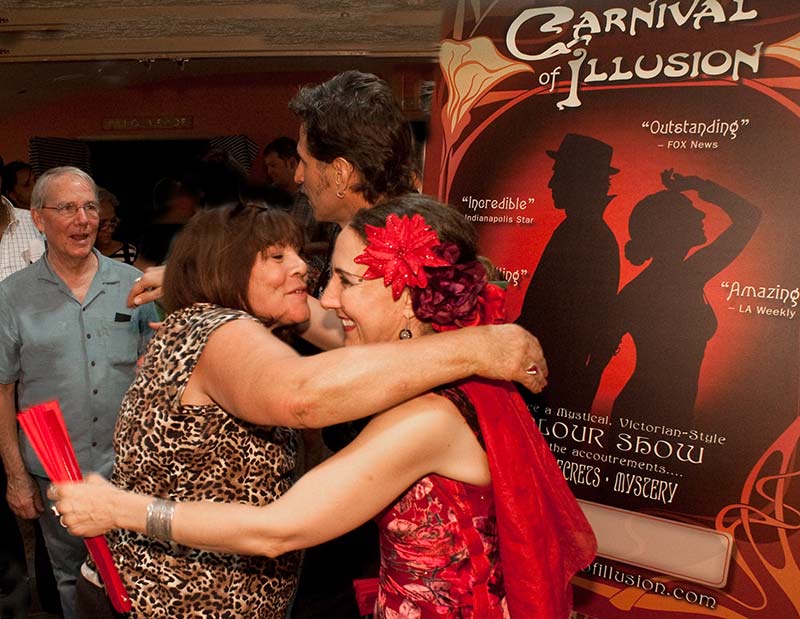
You may be asking though, exactly who are Sarlot & Eyed? Roland Sarlot and Susan Eyed both grew up loving magic, but each took a circuitous path before finally making the decision to make magic a full-time career. Eyed is a natural born performer, having traveled the world on numerous occasions and after being inspired by the cultures she encountered in countries such as Morocco, Turkey, India, and Senegal, she began studying Middle Eastern dance forms. This eventually led to her performing in Arabian night clubs in the United States and Canada, and then later to forming her own ethno-modern dance troupe, Hadia Sahara, in Tucson, Arizona. For Sarlot though, his journey into performing is truly unique, and without a doubt, is probably one not shared by anyone else in the world of magic. Sarlot was a scientist, working at the University of Arizona where he designed large-scale optics for telescopes. In 2002 though, the two brought each of their unique backgrounds together to form an illusion show and began touring and performing magic full-time.
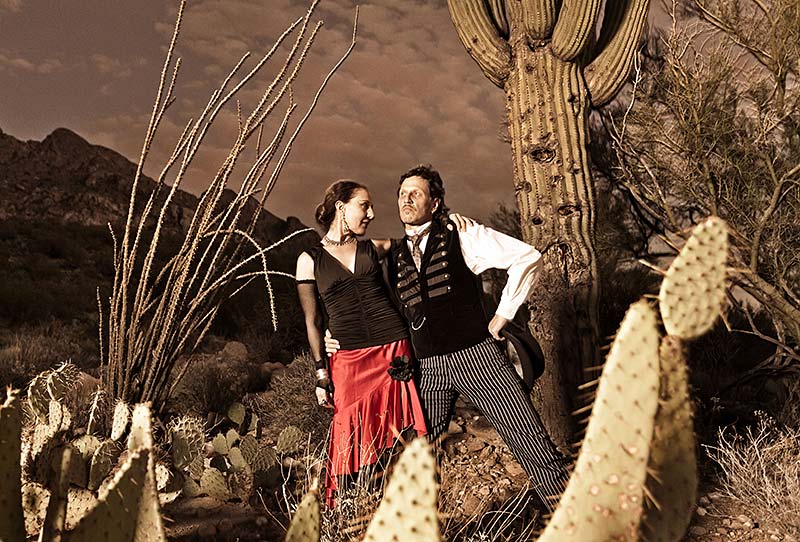
The duo wanted their show to resonate on a much more profound level for their audiences and to present something that was not just stereotypical fare. With an unadulterated work ethic, Sarlot & Eyed toiled tirelessly to hone and perfect their craft, never allowing anything in their act to be just stock, or performed in a way that audiences have seen countless times before. Through the myriad performances that ensued, the two have focused on building truly unique and engaging characters and structuring their act with their own story, and in doing so, have created a distinctive performance style. This originality was recognized in 2009 when Sarlot & Eyed won the Jack Gwynne Excellence Award for Presentation at the Abbott's Get-Together in Colon, Michigan. The late Hank Moorehouse, a veteran producer and artistic director of magic shows and large events including the S.A.M. Convention, the Abbott's Get-Together, and FISM Beijing 2009, attributed the success of Sarlot & Eyed to the relationship they form with their audiences. As Moorehouse stated, what sets the two apart from other acts is, "Emotion, both in physical actions and the story they tell. It's the reason they can connect, not only to a small group, but also on stage in front of a thousand or more people. In the over 41 years I have produced magic shows, I've seen very few acts that connect the way they do. The stories are believable, the emotion is sincere, and they are opening their hearts to the audience. They do not seem to be acting and that's the key to great acting." This authenticity in performance is what not only draws the audience in, but also what allows them to become invested in what they are witnessing on stage, creating those moments where they are able to suspend their disbelief for just a moment and truly believe that magic may exist.
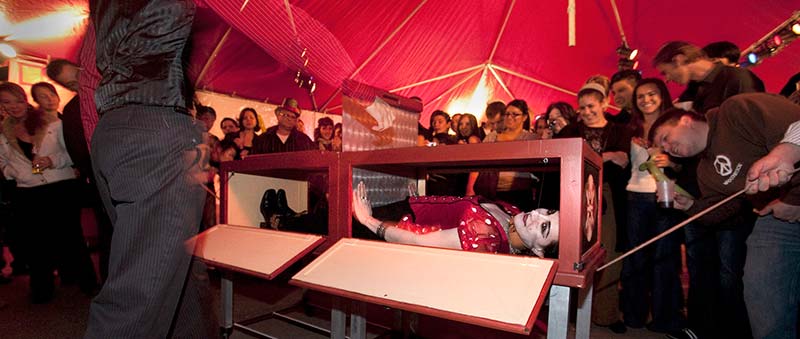
With their current parlor show, Carnival of Illusion in Arizona, Sarlot & Eyed have worked to meticulously create this magical environment for the spectator, including such interesting touches as putting the props that were utilized in the show on display in the lobby during intermission and after each performance. This gives the audience both a visceral and a tactile connection to the very magic they have just witnessed on stage and serves to give them an emotional investment in the show. The audience becomes not just a group of separate individuals, but instead a collective that are each sharing their magical journey together. Every time I saw Sarlot & Eyed perform, I watched as countless audience members hesitantly examined with astonishment the very grapefruit in which a spectator's signed bill was found in just moments before during the show, or the paper that Sarlot had created on stage with the Magic Matrix written on it in marker. The objects themselves became not just throwaway props, disposed of without a second thought, but rather items imbued with magic; this seemingly simple detail helped serve to draw the audience members into the fantastical world on an even greater level. One couple, who had traveled more than 120 miles to see the show remarked, "This is mind-boggling. We're in the front row and have no idea how anything is happening. This is the closest we've ever been to real magic." This reaction is what struck me the most about Sarlot & Eyed's performances, for audiences truly did not view the show as just "tricks," but what was instead, to them, "real magic."
I recently sat down with Sarlot & Eyed to discuss exactly how this relationship with the audience has been developed over the years as well as to discover their inspirations and philosophies in magic.
GENII: What prompted each of you to decide to pursue magic full time?
ROLAND: I realized early on when the magic bug bit me, I had to jump into the deep end and perform as much as possible. I quit my research job at the university (designing astronomical and semiconductor instruments) and started performing magic. I didn't want to just read about magic, I wanted to perform magic. There is a quote commonly attributed to Picasso addressing a group of young painters, "You have a thousand bad paintings in you. Get them out of you now!" That has been our mantra from the beginning.
SUSAN: I love magic, especially when it's presented with an artful twist. I was performing Middle Eastern dance when Roland committed himself to the magical arts. We would critique each other's performance, which began a natural progression for two ancient arts to join forces. I had assumed I would be the assistant, but Roland was sternly against it, so when he asked if I was serious about becoming a magician, all it took was a handshake. From that moment on, we followed a dream to share our vision and to experience the beauty of the magical experience with our audience.
GENII: What is the greatest lesson you have learned thus far in magic?
ROLAND and SUSAN: So often we hear, "it's about the magic" but we think "the magic" too often becomes replaced with "the magician." To us, our lesson is that it's about the audience. We used to just perform our material at the show but now we listen much more closely to our audience, who helps us build a creative partnership. We knew that magic could be powerful, but by listening to our audience, we saw firsthand the numerous ways that magic can affect people and how badly they want and need it in their lives. Magic can be a healing gift, a motivation to ponder, a belief in the possible, an avenue to live in the moment, or to make someone feel like a kid again. Every audience is different, and yet it seems at every performance a type of transformation occurs. One might compare it to a tribal bonding ceremony; people come in as individuals or couples and leave as a collective group with a shared experience. For us it's not about the tricks; we believe it's about creating an emotionally memorable magical experience for the audience. This is not only the big lesson; it is the direction we'll continue to pursue.
GENII: How did you initially develop each of your distinctive characters, and how did you try and establish each of their own unique voices within your act?
SUSAN: My characters are based on my life inspirations of headstrong women and of heart-strong men. I'm a nostalgic soul; I love vintage treasures, the visual arts, and world travel. Actors of the silver screen had a huge influence on me growing up and I think this is why I have a tendency to use a ton of facial expressions; on stage, these same expressions are merely magnified. To help create the mood during the performance, each piece is enhanced with music, which also helps to guide my character.
ROLAND: It's hard to know the center if you don't know the edges. Sometimes if you don't know what you want, you have to know what you don't want. We have tried, and still experiment with, different characters, old gags, drama, not speaking, improv, dance, comedy, and lots of it was absolutely embarrassing. What's even worse is that we have it on video! (Laughs) Horrible stuff. However, experimenting and finding the edges of what doesn't work for us has helped us find the center—our characters. In the end, the center for us is kind of who we really are anyway. It's a bit like Dorothy's journey (in The Wizard Of Oz) but you can't know that until you go through it.
GENII: When crafting your act, be it for the stage or parlor setting, what is your process for determining its structure?
ROLAND and SUSAN: Unfortunately, there may be no universal answer other than trial and error. Error seems to work for us, and plenty of it! In the beginning of our magical career, we wanted to be seen as "serious" magicians so our entire show was mostly one flavor, serious... but boring. Luckily, we realized the power of variety and our show now contains a fast-paced piece as well as a slower one, a physical skill piece and mentalism, and even though we aren't comedians, we added a playful humorous effect as well as a sentimental one... of course we also kept the dark, trippy, "serious" thing. The variety heightens the experience of the whole, which seems to work.
GENII: Audiences have such an invested interest in your performances. Talk to me about how important your relationship with the audience is and how you create that bond during each of your performances?
ROLAND and SUSAN: Our relationship with the audience is very, very important! We're well past our 1,000th show together and it would be foolish not to treat our audience with respect. No audience equals no performance! As we stated earlier, it's about the audience, so forget that big ego. Perhaps we understand this because we grew up watching Doug Henning, who shared the magic. We really dislike magicians who gets laughs at the expense of audience members. We would never want that to happen in our show. Before the performance begins, guests often ask not to be seated in the front because they "don't want to get picked on." To compensate for this stereotype, during our very first moments onstage, we set the audience at ease and honor our first participant with a gift.
In addition, the house lights are dimmed just enough for us to see the faces of our guests which makes it easier for us to connect and play with curious glances and facial expressions. Energy in the show is reciprocal; we listen, watch, feel, respond, and learn from their reactions. Audiences tell you everything if you listen. They will tell you, subtly and sometimes not so subtly.
Furthermore, working from a script minimizes awkward moments, which make audiences feel uneasy, yet we can go off script to catch the spontaneous roller coaster occurrences of the live show. One time at The Magic Castle, we lead everyone in an impromptu verse of "Frere Jacques" while we did a speedy prop fix for our "Frenchie" effect. Audiences dig those moments because they know it is their show ... and there is no dead time.
Finally, whether we're at our 125 seat parlour, the veteran's hospital, or playing at a theater or casino with 1,000-plus capacity, after the show we go near the exit and shake the hands of our guests to thank and let them know we appreciate them for coming. We've learned how important magic is needed in the world, so much so that people frequently hug us because they are filled with such emotion. Now that's magic!
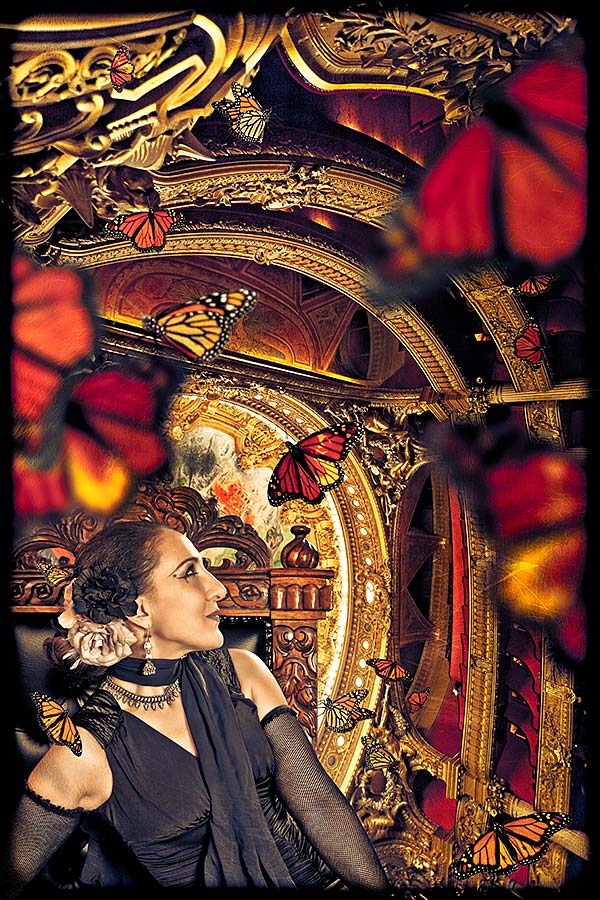
It is here, with the belief that the audience must always come first and foremost during any performance, that Sarlot & Eyed's true success can be found. Making themselves available after every show to connect with their guests on such a personal level immediately strips away any delineation of performer and observer, eliminating the impermeable fourth wall that many magicians often hide behind. For every instance I have seen David Copperfield sign autographs in the lobby after a sold-out show for a 2,500 seat house, or have seen Penn & Teller take the time to meet and greet their fans in the lobby after each of their shows, I have also seen magicians never once acknowledge their audience, or even take the time to actually speak to them. Without this all-important connection then, a magic show will become nothing more than "some cool tricks" in the mind of the audience and not something that is truly memorable, for magic will become relegated to simply an effect and not something that an audience can form an emotional connection with.

With this philosophy central to the core of Sarlot & Eyed's show, audiences are able to truly experience that which is magical, and the response has been so great from those who have seen the Carnival of Illusion during its initial 75 show run, that it has now been running almost continually ever since. Whether you are a professional magician, a semi-pro, a hobbyist, or just an enthusiast, there is something to be learned by watching one of Sarlot & Eyed's shows, and without a doubt you will take something away from it that will help to improve your own performances, be it how you develop your character, how you structure your story, or how you relate to your audiences. Ultimately, too, if you do have the chance to see the Carnival of Illusion, chances are you will probably also get hugged by the stranger sitting next to you.
